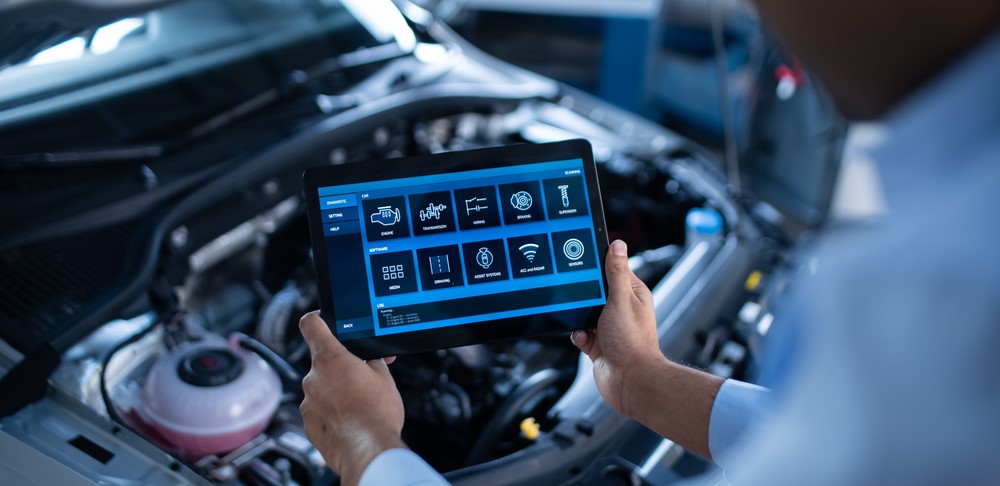
As technology continues to evolve, so does the automotive industry, including the field of auto repair. From advancements in vehicle diagnostics to innovative repair techniques, the future of auto repair is shaping up to be both exciting and transformative. In this detailed blog, we’ll explore some of the emerging trends that are likely to define the future of auto repair.
Predictive Maintenance
One of the most significant trends in auto repair is the shift toward predictive maintenance. Rather than waiting for a vehicle to break down before addressing issues, predictive maintenance uses data analytics and machine learning algorithms to anticipate potential problems before they occur.
By analyzing factors such as vehicle usage patterns, driving conditions, and component wear, auto repair shops can proactively schedule maintenance tasks and replace worn parts, reducing the risk of unexpected breakdowns and costly repairs.
Remote Diagnostics
Remote diagnostics technology allows auto repair technicians to diagnose vehicle issues remotely, often without the need for the vehicle to be physically present in the shop.
Using connected car technology and telematics systems, technicians can access real-time data from onboard sensors and diagnostic tools to identify problems and troubleshoot issues remotely. This not only saves time and improves efficiency but also enables faster response times and more accurate diagnoses.
Augmented Reality (AR) Repair Guides
Augmented reality (AR) technology is increasingly being used in auto repair to provide technicians with interactive repair guides and visual instructions. By overlaying digital information onto the physical environment, AR repair guides can help technicians identify components, locate hidden parts, and follow step-by-step repair procedures more efficiently.
This technology not only streamlines the repair process but also improves accuracy and reduces the likelihood of errors in the car industry.
3D Printing for Replacement Parts
3D printing technology has the potential to revolutionize the way replacement parts are produced and used in auto repair. Rather than relying on traditional manufacturing processes, which can be time-consuming and costly for producing low-volume parts, 3D printing allows auto repair shops to quickly and affordably produce custom parts on-demand. This not only reduces lead times and inventory costs but also enables greater flexibility in repairing older or rare vehicles with hard-to-find parts.
Electric and Hybrid Vehicle Repair
With the increasing adoption of electric and hybrid vehicles, the future of auto repair will undoubtedly involve a greater focus on servicing these alternative powertrain technologies. Auto repair technicians will need specialized training and expertise to diagnose and repair electric drivetrains, battery systems, and regenerative braking systems.
Additionally, auto repair shops will need to invest in specialized tools and equipment to accommodate the unique maintenance requirements of electric and hybrid vehicles.Vehicle-to-
Vehicle (V2V) Communication
Vehicle-to-vehicle (V2V) communication technology allows vehicles to communicate with each other, sharing real-time data about road conditions, traffic patterns, and potential hazards. In the future, V2V communication could play a significant role in auto repair by enabling predictive maintenance algorithms to factor in data from other vehicles on the road.
For example, if multiple vehicles experience similar issues or failures, auto repair shops could proactively address potential problems across entire fleets of vehicles.
Autonomous Vehicle Maintenance
As autonomous vehicle technology continues to advance, auto repair will need to adapt to the unique maintenance requirements of self-driving cars. While autonomous vehicles may reduce the frequency of accidents and wear and tear on certain components, they will still require regular maintenance and inspection to ensure safe and reliable operation.
Auto repair shops may need to invest in specialized equipment and training to service systems consisting of autonomous vehicle technology such as LiDAR sensors, cameras, and onboard computers.
Subscription-Based Maintenance Services
Innovation of subscription-based maintenance services are gaining popularity as an alternative to traditional pay-as-you-go repair models. With a subscription-based approach, vehicle owners pay a monthly or annual fee for access to a range of maintenance services, including routine inspections, oil changes, tire rotations, and more.
This model not only provides predictable costs for vehicle maintenance but also encourages regular servicing, helping to prevent breakdowns and prolong the lifespan of vehicles.
Conclusion
The future of auto repair is evolving rapidly, driven by innovations in technology, changes in consumer preferences, and the growing complexity of modern vehicles. From predictive maintenance and remote diagnostics to augmented reality repair guides and 3D-printed replacement parts, the car industry is poised for transformation.
By embracing these innovations and emerging trends and investing in the necessary tools, training, and infrastructure, auto repair shops can stay ahead of the curve and continue to provide high-quality service in the years to come.
Want to be ahead of the curve? schedule a consultation with ASAP Mobile Auto Mechanics to learn how predictive maintenance, remote diagnostics, AR and more can streamline your operations. Don’t fall behind – contact us today by phone at + 1 (650) 776-5727 or email traxxasfan@gmail.com.
FAQ’s
Is predictive maintenance only applicable to newer vehicles?
No, predictive maintenance can be applied to vehicles of all ages. While newer vehicles may have more advanced diagnostic capabilities, older vehicles can still benefit from predictive maintenance by analyzing data such as mileage, usage patterns, and component wear.
How does subscription-based maintenance differ from traditional repair services?
Subscription-based maintenance services offer a more proactive approach to vehicle maintenance, with vehicle owners paying a fixed fee for access to a range of services. In contrast, traditional repair services typically involve paying for individual repairs and maintenance tasks as they arise.
Are there any privacy concerns with remote diagnostics technology?
Remote diagnostics technology relies on accessing real-time data from onboard vehicle sensors and diagnostic tools. While this data is primarily used for diagnostic purposes, some vehicle owners may have concerns about privacy and data security. It’s essential for auto repair shops to prioritize data protection and adhere to relevant privacy regulations when implementing remote diagnostics systems.
